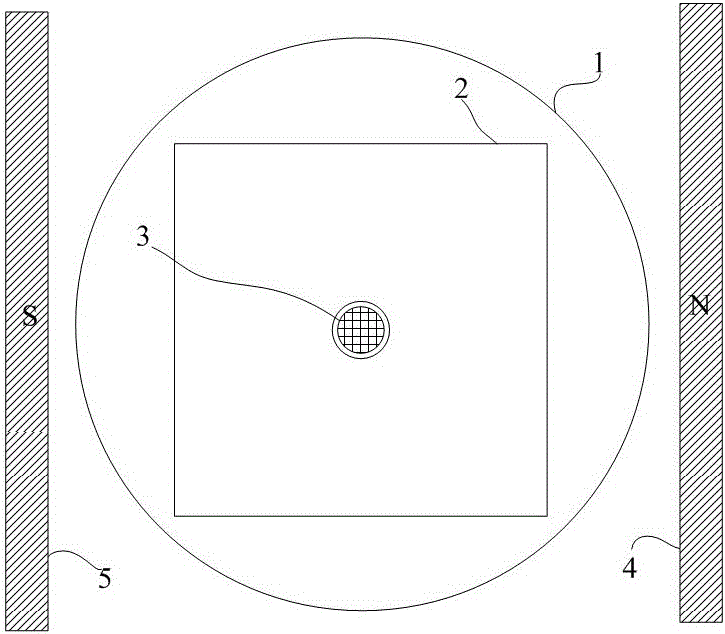Neutron detector based on fission-electron collection principle
A neutron detector and electron collection technology, applied in the field of radiation measurement, can solve the problems of signal formation background, the influence of fission fragments, and the easy falling off of the coating, so as to avoid the instability problem and improve the sensitivity.
- Summary
- Abstract
- Description
- Claims
- Application Information
AI Technical Summary
Problems solved by technology
Method used
Image
Examples
Embodiment 1
[0025] The shell 1 of this embodiment is cylindrical, with a diameter of 60 cm, and is made of magnetically conductive stainless steel with a thickness of 0.4 mm. The sensitive electrode 3 is made of uranium-niobium alloy with a diameter of 5 cm and a thickness of 0.1 mm. The collecting electrode 2 is a hollow square copper plate with a side length of 40 cm and a thickness of 0.1 mm; the hollow part is circular with a diameter of 5.5 cm. The stable magnetic field is generated by N-level 4 and S-level 5 permanent magnets, with a strength of 10Gs, and the coverage along the direction of the radiation channel and along the direction of the vertical radiation channel is greater than 40cm.
[0026] Electrons will be deflected under the action of Lorentz force in the magnetic field. The energy of electrons generated by neutrons is mainly distributed in the hundreds of eV, and the deflection magnetic field is set for electrons with energy below 1000eV. For a magnetic field of 10Gs, ...
Embodiment 2
[0028] The implementation of this embodiment is basically the same as that of Embodiment 1, the main difference is that: the collecting electrode 2 is made of a hollow square aluminum plate, and the constant magnetic field is an electromagnetic field.
[0029] Collecting electrode 2 can also select other solid conductive metals that are easy to shape, such as gold, silver, iron, zinc, etc.
PUM
 Login to View More
Login to View More Abstract
Description
Claims
Application Information
 Login to View More
Login to View More - R&D
- Intellectual Property
- Life Sciences
- Materials
- Tech Scout
- Unparalleled Data Quality
- Higher Quality Content
- 60% Fewer Hallucinations
Browse by: Latest US Patents, China's latest patents, Technical Efficacy Thesaurus, Application Domain, Technology Topic, Popular Technical Reports.
© 2025 PatSnap. All rights reserved.Legal|Privacy policy|Modern Slavery Act Transparency Statement|Sitemap|About US| Contact US: help@patsnap.com


